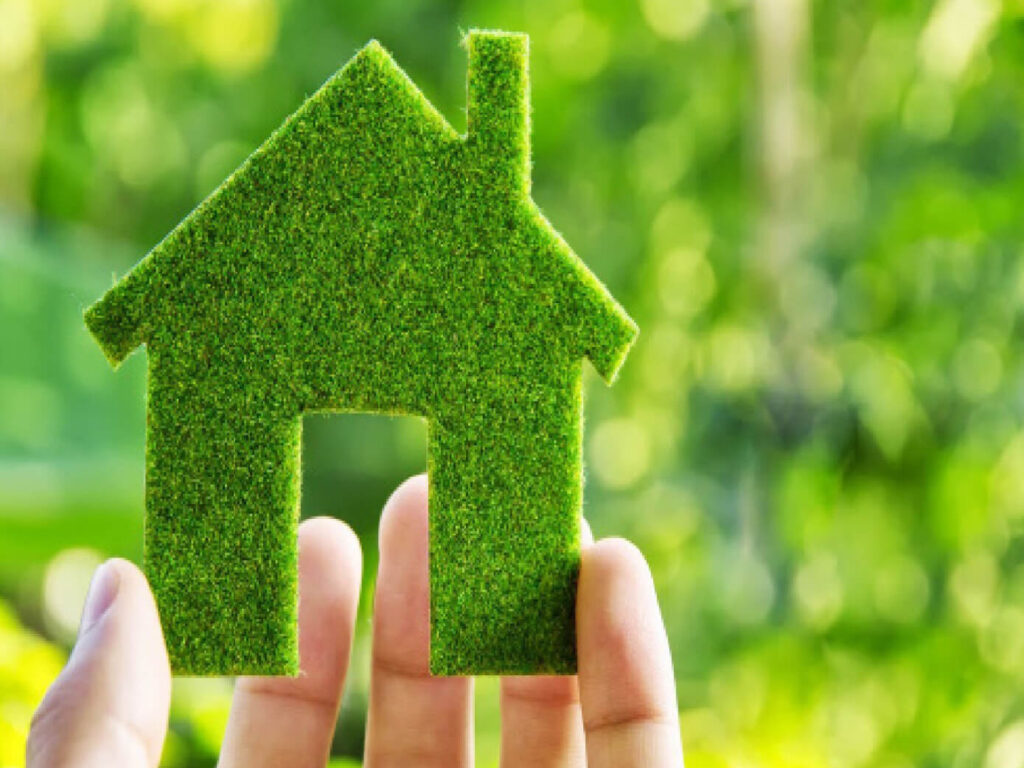There is much more involved in building a green home than simply choosing environmentally friendly building materials.
A “green home” is constructed differently from a “normal home. According to Chennai-based sustainable architect Prashanth S. Kharche, “it’s practically a spiritual journey, and the inspiration for it has to originate from the desire to reduce your carbon footprint and live a somewhat sustainable life. Indians who live in cities are not opposed to relocating to the suburbs if it means they can live in a house that does not carelessly destroy the environment.
Sidharth Dongre, a homeowner in Mumbai who is originally from Bhopal, states, “Last year, I purchased a plot of land in Bhopal, and this year, I intend to do similarly in Mumbai. It has been said that it is an unrealistic fantasy, but I want to test whether I can construct a sustainable home in the city for Rs 60 lakh with land prices included. I’d still like to see if I can construct a house that is not only resilient to the elements but will also be sturdy in 20 years. My life’s ambition is almost here, but I have no idea where to start.

Cost-effective versus outsourcing
Most architects, including Kharche, think that if you want your sustainable home to not break the bank, you need to live where you intend to construct it. “When I say live where you construct, what I mean is that you will have to devote about 3 to 4 months residing in the neighborhood if you want to lower the cost of building,” says Kharche. You will be able to participate more in material sourcing thanks to this.
According to Kharche, design is the key to a greenhouse and is therefore particularly difficult on urban fringes. “Indian homes must be constructed of concrete to withstand the country’s severe weather. However, you may still experiment with the interior design; for example, you can use Shahbaz stone or Kota stone for the flooring and ceiling coating, which are both locally sourced and eco-friendly materials. These materials make your home more energy-efficient by lowering the temperature inside and reducing your need for air conditioning.
Shahbaz stone, for instance, costs Rs 19 per sq.ft., whereas Kota costs Rs 21 per sq ft on average. They are also less slick than our contemporary tiles.
How to construct green or environmentally friendly houses:
Fixtures: The key to reducing water use is taps with aerated fittings. These aerated fixtures can be used in a variety of ways, such as high flow to remove dirt and filth from between your fingernails and mist flow for a rapid rinse.
Split AC with a VRV system: If you don’t have enough solar panels, consider investing in one because it uses the least amount of refrigerant and lets you manage the temperature of individual air-conditioning zones. This indicates that they use less energy, which will result in long-term savings on your electricity bill.
The solar panel: If your house requires 20 kV of electricity and 1 solar panel costing Rs 1 lakh, you will need to budget Rs 25 lakh for the panels alone. As a point of comparison, a refrigerator typically needs a solar panel that really can produce 1.5 kV of energy.
Cross ventilation: Never construct a residence facing west, as the setting sun is thought to raise indoor temperatures more than the morning light. The west wall of your home should not have any openings since it retains heat and raises the temperature within your house at night, according to several architects.
Bricks: Traditionally manufactured, hollowed bricks are best because they tend to maintain your room’s temperature down during the summertime.
Materials: To maintain the temperature in your house low and save money, build the interior of your house with natural materials such as Kota or Shahbaz.
Glass: If you do decide to utilize glass in your home, opt for a light tint rather than clear glass because the latter magnifies the heat produced throughout the day.
Refurbished wood: Use sturdy, aged wood, such as that used for train sleepers and carriages.






















Sonali
on said
Thanks for your blog, nice to read. Do not stop.
hemant
on said
Thank you very much for appreciating our efforts.